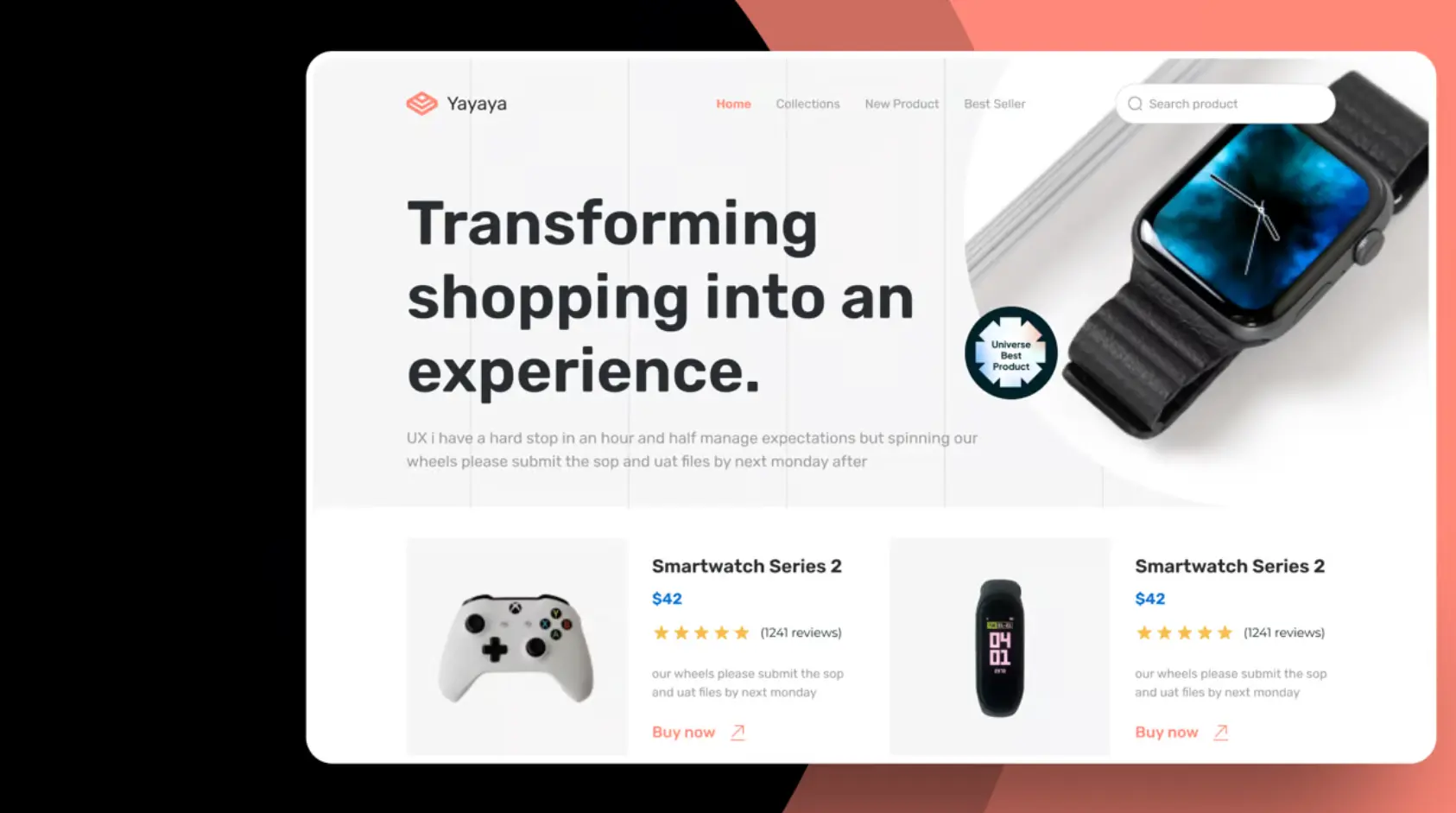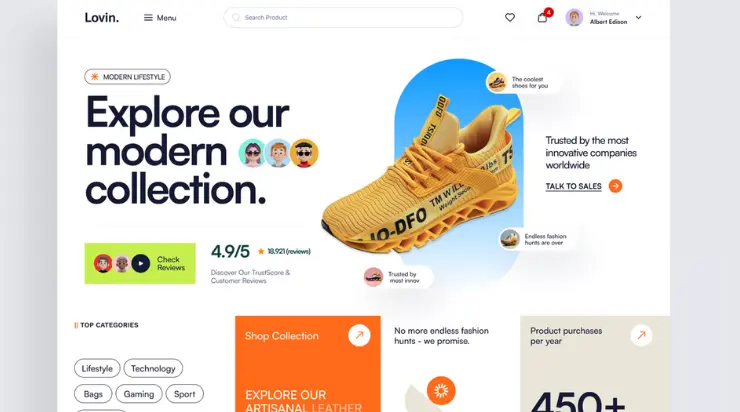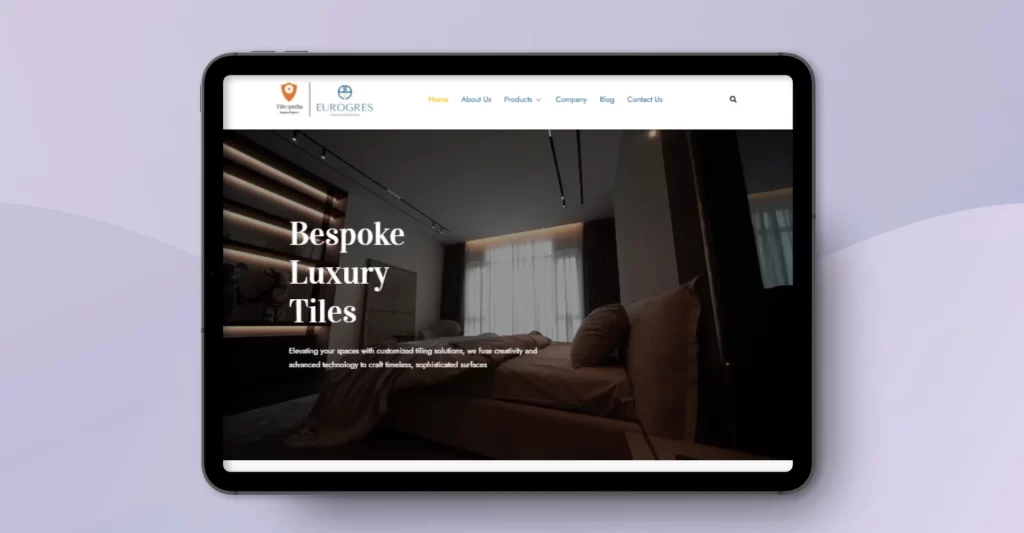While shopping for a Shopify theme, each one is assessed after it’s been installed with fonts, images, and colors. This is an excellent way to view the theme at its best. However, work must be done when you’ve set up a theme in your shop.
This is where design choices come into play—something that might scare you if you have no previous exposure to them. We’ll discuss Shopify Theme Customization and ways of promoting your brand and boosting sales.
Shopify Themes customization: DIY or get a developer onboard?
The virtue of using themes is that many of the structural design choices are already taken care of. You are free from fretting about where to place every image and paragraph in your complex website builder or how to organize your pages.
However, to make your store look better and stand out as a brand, some personal touch will be vital. You can liken this situation to painting walls in a house–the key elements are already there, but you still have an opportunity to choose the colors and adjust other details.
Hire a Shopify developer
Your number of choices is staggering and even overwhelming when you’re new to web design. You can use any color you want. With a mouse click, you can modify things!
Considering all your other important responsibilities, it becomes evident that enlisting the help of an expert is more cost-effective than stumbling through it yourself when you get into more complex functionality and design choices.
The best part is that they’re experienced with Shopify, so they know every nook and cranny of the platform that could be helpful for your optimization effort. The Shopify Experts marketplace helps connect you with experienced web designers whom you may hire for expert guidance or even do the design work for you.

Theme yourself the way you want it on Shopify
Going the DIY route may be logical. Thanks to your expertise in technicalities and design, you could be starting your business from nothing and can construct a webpage without any assistance. Alternatively, you may need some basic functionality to get started with an upgrade plan.
Irrespective of what led you here, Shopify’s theme editor has an easy-to-use interface, making it possible for online store owners to change their stores’ look and feel without having any programming or artistic skills. In addition, if you can use tools such as Sections Everywhere, page templates, and Shopify app embeds, then your site can be enhanced using a few clicks.
10 ways to customize your Shopify Themes
Here are 10 advanced tips to help you make the most out of customizing Shopify themes:
- Understand Liquid Templating
Shopify themes rely heavily on Liquid, a versatile templating language that helps display dynamic content and allows advanced customization. Developers and store owners can manipulate data, create conditional statements, and build custom functionalities through tags and filters. Mastering Liquid can greatly personalize user experience.
- Customize Theme Settings
When customizing Shopify themes, one of the initial steps is where the built-in theme settings come into play. This setting provides an easy interface for changing colors, fonts, and layouts, among other things, without needing any code writing knowledge. This method ensures the first changes made are easily reversible and maintainable, thus making them good for both beginners and regular users alike.
- Employ Custom CSS and JavaScript
Custom CSS and JavaScript are needed to gain more control over design elements and interactive features. Through Shopify’s theme editor, one can use styles or scripts that supersede the default theme actions. This provision helps transform spacing and install animation effects alongside other third-party implementations.
- Use Shopify Apps
Increase your Shopify store’s capabilities through third-party app integration. Such apps include product reviews, live chat support, advanced search functionalities, etc. Most of these apps have Shopify theme customization options that blend well with your theme without requiring you to be an expert in coding.
- Build Personalized Templates
Shopify allows customization of pages, products, collections, and blog posts. This makes it possible to create unique landing pages for promotions or seasonal sales. These templates are custom-made so the user can control their layout and content, ensuring they align with the company’s brand identity and marketing strategy.
- Apply Conditional Logic
Use conditional logic in your Shopify theme to increase user involvement and simplify the shopping experience. For instance, you can use Liquid’s {% if %} statements to display dynamic content based on customer tags, product attributes, or cart contents. This strategy increases conversion rates and enhances the overall shopping experience.
- Optimize Mobile Devices
Optimizing mobile devices is important in the modern e-commerce world. Ensure that your Shopify theme is fully responsive and has no hitches when accessing it on different gadgets. Thoroughly test it across various screen sizes and use CSS media queries to ensure that layouts and styles are best suited to smartphones and tablets.
- Customizing Checkout Pages
Though Shopify maintains strict security measures for checkout pages, there is room for customization within set limits. You can choose colors, logos, and messaging using Shopify’s checkout settings, making the entire process part of your brand identity. You need to check out some apps that allow more customization while still being in line with Shopify’s security rules.
- Monitor Performance and Speed
User satisfaction and search engine rankings are dependent on page speed. Analyze the performance of your Shopify store frequently using tools such as Google PageSpeed Insights or Shopify’s inbuilt analytics. To ensure fast loading times, use optimization techniques like image compression, code minifications, and leverage on Shopify’s content delivery network (CDN).
- Backup and Test Changes
Consider backing up theme files before making major changes or updating them. Shopify’s theme editor permits theme duplication and rollback features so you can safely experiment with your store. Rigorous testing is necessary to prevent Shopify theme customization errors and seamlessly integrate them into your live store environment.
Bottom Line
Customizing the Shopify theme allows you to create a unique shopping experience that resonates with your customers. Applying advanced strategies such as Shopify Sections, Liquid templating, CSS Flexbox, and Javascript integration helps bring your store to life with your brand philosophy and specific business goals. Continuously refining through extensive testing, optimization, and adherence to SEO best practices is critical for maintaining a visually appealing and high-performing online presence.
Web Concepts Technologies is a popular Shopify development company, provides insights you can’t find elsewhere on new web technologies, development trends, and best practices. Our platform serves as an important pool of information for companies and developers looking to navigate the ever-changing digital world or take advantage of it. Be it exploration in the front-end innovations or backend efficiency improvements, Web Concepts Technologies has empowered stakeholders to have what it takes to compete effectively in the modern online environment.
Faqs:
Yes, Shopify allows regressing to the original theme setting at any time. While in the theme editor, select the theme you wish to edit and click reset. This feature allows you to undo changes quickly so that you can return to your original theme settings whenever they are needed. You might be trying out different looks or experimenting with customizations—thus, having a reset option means that you have flexibility without running the risk of permanently changing your store’s appearance. It’s an excellent way of keeping things uniform and adjusting/updating issues seamlessly within your Shopify storefront.
You can use applications available in the Shopify App Store to add custom functionality to your Shopify store. Many apps have non-programmer solutions for features like pop-ups, countdown timers, and social media integration. These apps come with simple user interfaces that enable you to upgrade your shop even without understanding coding very well. You may want to improve dialogue with users, make payment processing easier, or enhance product presentations – there is probably an app for each purpose. To find tools that meet your shop’s special needs and goals, look at various options in the App Store.
You can engage with the services of any of the top Shopify developers specializing in customization. The Experts Marketplace by Shopify has a list of professionals who help create custom designs and integrate them into a variety of coding tasks specifically made for your store. These experts have experience optimizing Shopify themes, implementing unique functionalities, and ensuring effective brand representation through your store. Engage an expert from Shopify to assist you with designing modifications, payment gateway setup, or third-party application integrations to make this process straightforward and deliver high-quality outcomes.





